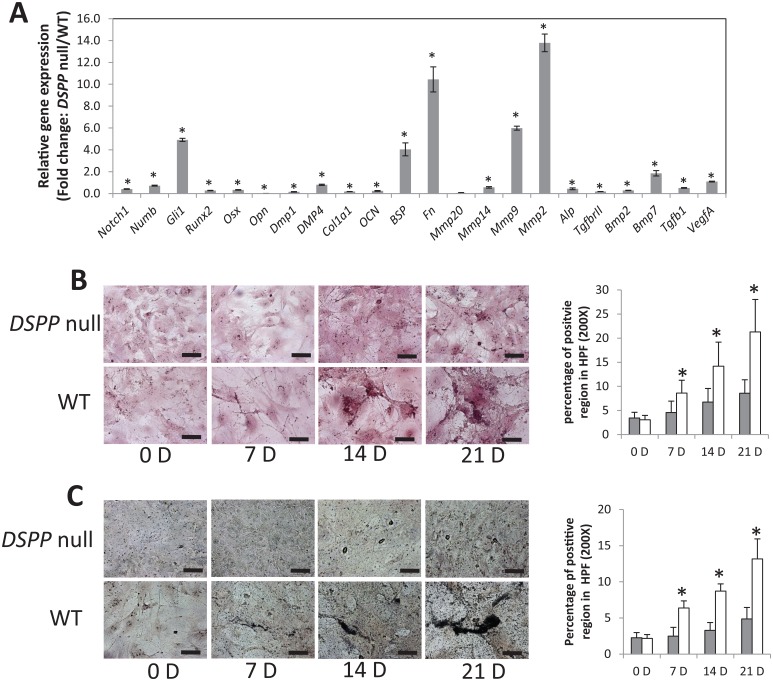Figure 4.
The loss of DSPP alters the expression of osteoblast differentiation genes in 5-d calvarial tissues and the formation of a calcified matrix. (A) Total RNA was isolated from primary calvarial cells generated from DSPP-null and wild-type (WT) mice (n = 20) and subjected to quantitative real-time polymerase chain reaction. Analyses were carried out for the mRNA levels of Notch 1, Numb, Gli1, Runx2, Osx, OPN, DMP1, DMP4, ColI, OCN, FN, MMP20, MMP14, MMP9, MMP2, ALP, TGFβRII, BMP2, BMP7, TGFβ1, and VEGFA. The results were normalized to mGAPDH. The gene expression fold change was relative to that of WT mice, which was normalized as 1. Values are the mean ± standard deviation of 3 independent samples. Note the downregulation of most of the osteogenic differentiation markers. A statistically significant difference was observed: *P < 0.05 vs WT. Comparisons were performed using the Student’s t test. (B, C) Cultured osteoblast cells of 5-d WT and DSPP-null mice were fixed at 0, 7, 14, and 21 d after the initiation of differentiation. Histological staining for Alizarin red (B) and von Kossa (C) was performed as described in Materials and Methods. Statistically significant amounts of phosphate and calcium were observed in the WT mice when compared with the DSPP-null mice. *P < 0.05. Comparisons were performed using the Student’s t test.

